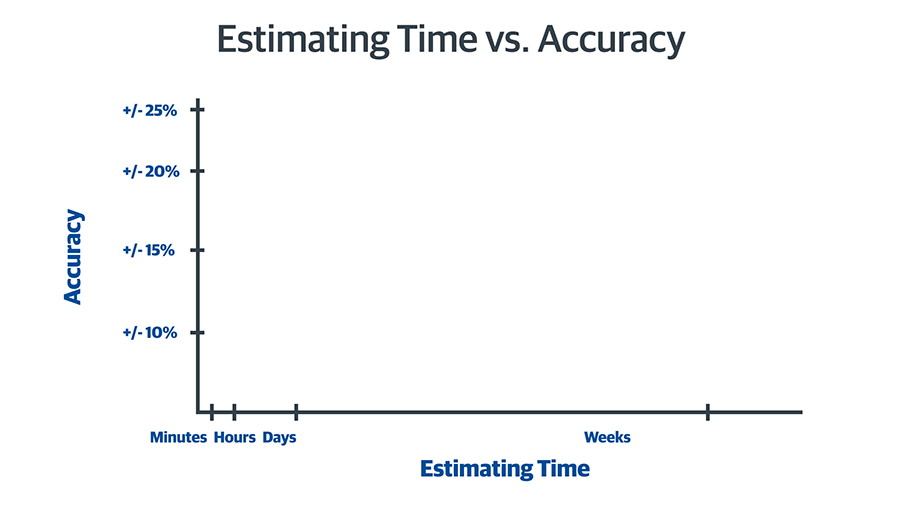
Common Types of Construction Estimates
Throughout all phases of a construction project, it is important that project owners have a good sense of what the total cost will be. In most cases, cost is the most important factor in determining whether or not a project is even viable. That’s why having the most detailed and accurate cost estimate possible is vital at every stage. In order to do this, several estimates need to be prepared. Here are the four types of construction estimates you’ll need to execute successful construction projects.
1. Conceptual Construction Estimates
Before kicking off a project, decision-makers need to have a rough idea of what the project is expected to cost. And when they are still assessing which plan to go with, or if the project is viable at all, they need a reliable estimate that is quick and efficient to create. That’s where a conceptual estimate, also called a rough order of magnitude or preliminary estimate, can come to the stage.
Conceptual estimates, also called rough order of magnitude or preliminary estimates, can be prepared within minutes and are less expensive to produce because they require less research and time to produce. The intention with a conceptual estimate is to give decision-makers enough information to assess which plan they want to go with. And because several may need to be created, it is important that they can easily be created and modified. Conceptual estimates should predict a project’s cost with as much accuracy as possible within a constrained time period and are usually within around 25% accuracy.
2. Square Foot Estimates
In the next stage, project owners can benefit from investing in a more detailed, more accurate estimate to inform the beginning stages of construction. This is where a square foot estimate comes into play. An accurate square foot estimate can be used to benchmark initial costs, ensuring that the project starts out on track.
Square foot estimates can usually be created in the span of several hours, so they are naturally more in-depth than what is required during the conceptual stages of a project. Square foot estimates provide more detailed information about the cost of labor, materials, professional services and more. Although they provide more detail than conceptual estimates, they are based on the typical cost to create a building with a set square footage, of the same type and use. Because a square foot estimate is still intended to be created with relative efficiency, it does not include finer details like specific materials used. A square foot estimate is intended to predict total cost of construction, give or take a 20% margin.
3. Systems & Assemblies Estimates
At this point, it is worth it to invest more time and resources into anticipating costs that are more specific to the project. This is when owners will want a systems and assemblies estimate.
The advantages of creating a systems and assemblies estimate at this stage is that this estimate provides a detailed breakdown of the costs of specific systems and assemblies that will exist in the final facility. This will include items as simple as lavatories, to more complex ones like mechanical systems. Because this type breaks down cost data into more minute details than a square foot estimate would, it gives a more accurate total cost. At this stage, systems and assemblies estimates can take days to create, and can predict the total cost of construction at an accuracy within 10-15% of the final cost.
4. Unit Price Estimates
The final estimate type is a unit price estimate. This estimate is created to have a final, accurate prediction of what the total project cost will be. A unit price estimate involves the highest level of research and takes the longest amount of time to produce. But for good reason — it is intended to serve as a reference for project spend throughout the entire construction phase. The unit price estimate includes costs specific to the project, down to the specific materials that will be used.
This type of estimate can take weeks to produce but is the most informative of all the types. It will be referenced throughout the majority of the project’s life cycle, so accuracy and detail are important at this stage. A good unit price estimate will predict the total final cost of the project within 10%.
Why Accurate Cost Data is Important
For all of these estimates, reliable cost data is the most important factor to producing accurate, effective estimates. The benefits of being able to access cost data that is up to date is also vital. Fortunately, Gordian’s RSMeans Data Online can provide the cost data needed at every stage of the project’s estimating process. It can even predict future costs up to three years in the future. RSMeans Data Online provides the most accurate, most reliable cost data in the industry, and instant access to updated cost data streamlines the estimating process.

Sponsored by



